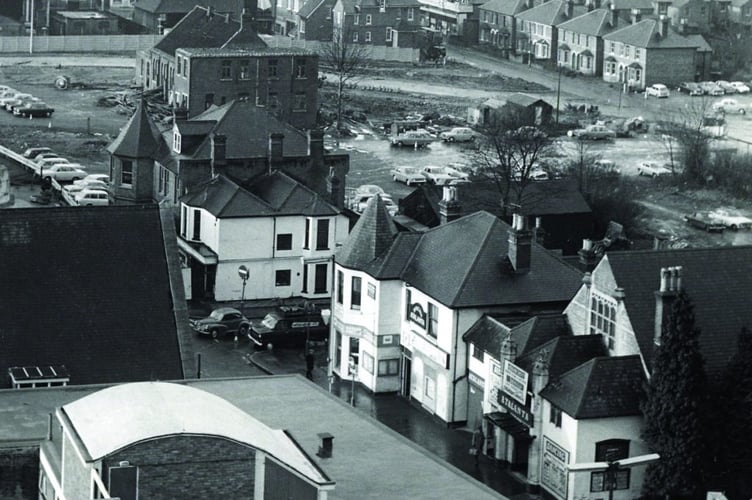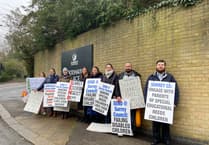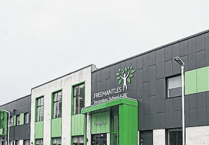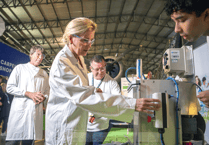OLD picture postcards give a fascinating glimpse into the past and sometimes a bit of research can reveal a wealth of detail that has long been forgotten.
The postcard here, with the caption “Woking High School”, is postmarked 11 March 1905. Some readers may recognise these buildings; they were in Commercial Road, with Bath Road adjoining to the right. Beyond Bath Road was the Atalanta ballroom, part of it featuring a small turret similar to the one seen as part of the school.
Reader Mark Coxhead, who owns the postcard, has discovered that the school was called Cambridge House and was at No 7 Commercial Road. Next to it, at No 9, was once a foreign-language school.
Woking High School for Girls was an upmarket private school, established in 1884 by Miss Helen Taylor Coulton as headmistress for the education of girls aged up to the age of 18.
A kindergarten school was established in 1886 for both small boys and girls. In the early 1920s, a preparatory school was offered for boys up to 10 years.
From reading advertisements that appeared in the Surrey Advertiser and then in the Woking News & Mail (on microfilm at the Surrey History Centre) from December 1894, Mark says a reasonable understanding of the educational ethos of the school can be formed.
From an 1887 advert, the curriculum consisted of singing and harmony, violin, watercolour drawing, and French and German language tuition in preparation for public examinations.
Other adverts in the News & Mail towards the end of the 19th century referred to certified mistresses, foreign governesses and visiting professors with classes for dancing and physical training.
Accommodation was offered for boarders. The 1891 census shows Miss Coulton (aged 46) resident, with two teachers, one boarder (aged 10) and three servants.
The 1901 census shows a resident governess (Bessie Johnson) and a music teacher (Hilda Lovell), seven boarders aged six to 16 years and two domestic servants.
The 1911 census is more much revealing. Miss Coulton is shown as retired, living in Cornwall with her sister Lucy, who had also taught at the school.

By that time a Miss Rebecca Webb (aged 50) had become headmistress. Also living at the school were two “mistresses” – a Miss Agnes Cox (music) and Julia Cooke (languages), and two assistant mistresses, one housemaid and four other servants. There were 11 girls boarding, aged eight to 18 years. The school comprised 18 rooms in total.
The final advertisement for the school appeared on 18 August 1922 in the Woking News & Mail, while the building is shown as vacant in the 1923 Kelly’s Directory of Woking.
Mark adds that also in 1923 the Girls’ Secondary School was opened in Park Road in four disused army huts. These had been erected during the First World War for the Army Pay Corps.
He wonders whether this was the reason for the closure of Woking High School, although the buildings in Commercial Road look far more salubrious than the four army huts. The first headmistress of the Girls’ Secondary School was a Miss Katharine Maris.
There will be more about Woking High School for Girls in the next edition of the |News & Mail, with Peeps featuring the school’s annual prize-giving to pupils, its fees and details about the foreign-language school next door.
If you have some memories or old pictures relating to Woking and its people, call David Rose on 01483 838960, or drop a line to the News & Mail.
David Rose is a local historian and writer who specialises in what he calls ‘the history within living memory’ of people, places and events in the west Surrey area covering towns such as Woking and Guildford.
He collects old photos and memorabilia relating to the area and the subject, and regularly gives illustrated local history talks to groups and societies.
For enquiries and bookings, please phone or email him at [email protected]




